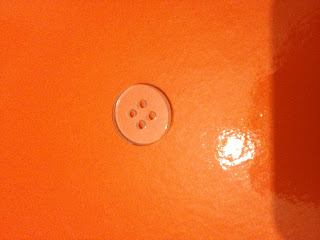These are some well-known fabrics
that are frequently used in virtually all markets today. Although they have
been grouped by the category they are often associated with, but they are no
solid rules to a fabric’s usage. For some designers, for example, silk chiffon
may be an exclusively eveningwear fabric, while others may incorporate it into
their daywear.
DAY WEAR
Wood gabardine
Tightly woven fabric known for
its durability and versatility. The use of 100 percent worsted wool gives a
smooth appearance on one side and twill on the reverse. Traditionally used in
menswear suiting, but now a mainstay across all categories.
Tropical wool
Lightweight worsted wool commonly
used for suiting during transitional seasons.
Cotton poplin
Medium- to heavyweight fabric
most frequently made of cotton or polyester blend. This sturdy fabric with
noticeable ridges is used in casual sportswear for men and women, particularly
for shirting.
Denim
Woven cotton twill fabric of
medium weight, originally used for work wear, today it is generally used as
bottoms and jackets for more casual garments.
Chambray
Lightweight woven fabric
combining a coloured yarn with an undyed yarn in a plain weave to create a
denim look. Used for casual sportswear for men and women.
Corduroy
Durable fabric with parallel
lengthwise cords or ridges called “wales”. The thickness of the wales
determines the fabric’s use; thinner wales give a softer feel ideal for shirts;
thicker wales for bottoms and jackets.
Broadcloth
Densely woven fabric that is
extremely sturdy and very soft. Original wool, it is now made in cotton and is
perfect for shirts and blouses.
Voile
Lightweight sheer fabric with a
gauze-like quality made of silk, rayon or cotton. Often used in lingerie, baby
clothes, blouses and skirts.
Lawn
Plain weave, semitransparent
fabric originally made from combed cotton, resulting in a silky hand feels.
Crisper than voile but less crisp than organdy, it is suitable for blouses.
Organdy
Typically 100 percent cotton, a
crisp, transparent woven fabric often used in shirts and blouses.
Batiste
Delicate, fine cotton with a
graceful drape perfect for baby clothing, lingerie and nightdresses.
Cotton sateen
Medium weight fabric, made from
mercerized cotton, with a similar sheen to satin. Its high thread count makes
it soft to the touch and perfect for casual separates.
Cavalry twill
Strong cotton, wool or worsted
fabric constructed in double twill, which results in diagonal, subtle ridges
that give it a distinct look, traditionally used for trousers and jackets.
Gabardine
Tightly woven, durable twill with
a distinct diagonal ridge running throughout, commonly used in trousers and
rainwear for men and women.
Swiss dot
Sheer cotton fabric often made of
lawn or batiste with a small dot pattern either woven into the fabric or
flocked onto the surface. Typically used in shirting, dresses and children’s
clothing.
Linen
Summer weight fabric with natural
slubs running throughout. Know n for its tendency to crease, which is part of
its charm, it is available in various weights for separate.
Canvas, duck, sailcloth
Very stiff, durable, plain
fabrics, suitable for outerwear. Although dyeable, theses traditionally come in
unbleached white.
Chino
Twill fabric made from mercerised
cotton and typically khaki in colour. Originally used for army uniforms but has
become a staple today for men’s and women’s trousers.
Chintz
Boldly patterned fabric of
flowers, abstract geometrics or figures, traditionally made from 100 percent
cotton. Finishes vary from coarse and rough to smooth and glossy. Originally
used in upholstery; used today in separate.
Waffle weave
Woven with a recesses square
pattern reminiscent of waffles- hence the name. often 100 percent cotton but may
be offered in blends; used in casual and athletic clothing.
Challis
Lightweight, plain- weave fabric,
made from cotton or wool, usually with a printed design. Its soft hand feel
makes it perfect for pajamas, dresses and blouses.
TAILORED
Camel hair
May be made from 100 percent
camel hair or camel hair blended with wool. Colours aren’t usually dyed but
remain neutral. This classic fabric has a fine, brushed, hairlike finish
traditionally used in coating or suits.
Wool felt
Nonwoven fabric created when the
sheep’s wool or fibre is subjected to heat, moisture or agitation, creating a
very thick, dense fabric used in outerwear, coats and jackets.
Zibeline
Soft, airy fabric with a long,
glossy pile from a mixture of mohair-type fibres with twill weave. Long-defined
nap lies in one direction, adding structure and body, and making it ideal for
suits and coats requiring extensive tailoring.
Sharkskin
Smooth, unique weave using a
blend of rayon or acetate along with wool in white with coloured fibres to create
a basket-weave effect. Its two-toned woven appearance makes it popular for men
and women’s suits.
EVENING/BRIDAL
Organza
Plain weave, sheer fabric, often
silk or a synthetic blend, used to create volume in bridal dresses.
Chiffon
Sheer, delicate woven fabric,
often 100 percent silk but available in synthetic, used for its fluidity and
“airy” quality. Suitable for dresses and blouses.
Georgette
More opaque than chiffon, often
made from silk but available in synthetics. Has a crinkly, crepe-like texture
and is dry to the touch. Drapes well and are ideal for blouses and dresses.
Charmeuse
Luxury fabric with a glossy satin
finish, extremely lightweight. Often made in 100 percent silk, its fluidity
creates a soft drape suitable for dresses and separates.
Crepe de Chine
Light, plain-woven fabric,
typically 100 percent silk with a slightly crepe character. Used in dresses and
blouses.
Crepe-back
satin
Lightly
textured, two-faced fabric with crepe on one side and a high-lustre satin on
the other. Available in silk and synthetics, the soft drape is suitable for
dresses and blouses.
Velvet
Soft,
plush fabric made of silk, cotton or synthetic blends. The threads stick up,
forming a soft-to-the-touch pile 。 traditionally an evening fabric, but can
cross over into daywear.


































